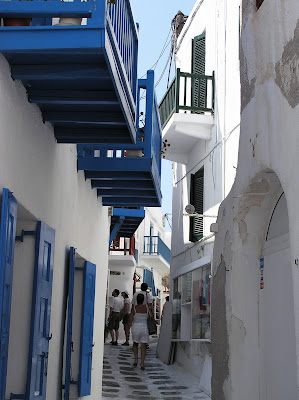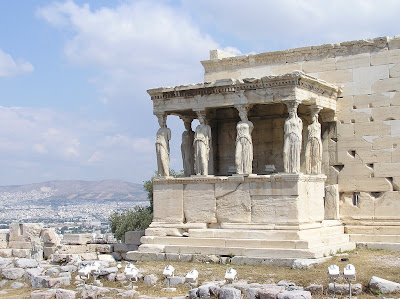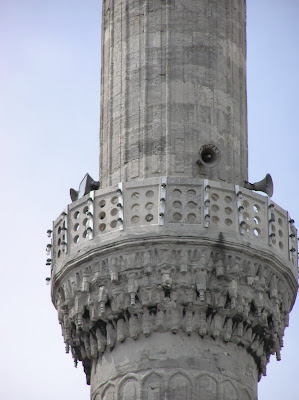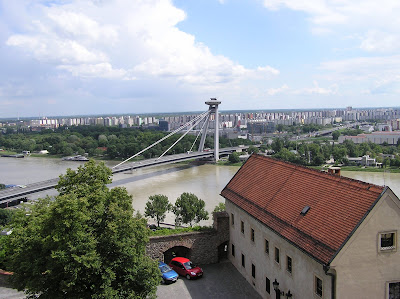

In Budapest
Lindso and I parted ways. She caught a shuttle to the airport to fly back to Maui, and I caught the metro to the train station. I boarded a night train to Transylvania! I would be making a 10 hour train ride across Hungary, into Romania, through the Carpathian mountains and into Transylvania with a final destination of
Brasov. This was my most exciting train journey yet. The train was pretty empty, and I had a sleeper compartment all to myself. I fell asleep in my little fold out bed to the
clickety-clack of the tracks. I awoke briefly after midnight to show my passport to the Romanian border control. Around 5am I awoke to the sunrise over the foggy Carpathians. The landscape was green farmland, with many men walking along the road with fishing rods for some early morning angling.

I arrived in
Brasov, a city of 300,000, early in the morning. A long walk through deserted cobblestone streets brought me to my hostel. This would be my first hostel experience, and though Kismet
Dao was not the greatest hostel I'd see, it was comfortable enough at $12 a night.
Brasov has a picturesque old town. It also unfortunately has a KFC in the central square. Progress is coming quickly to Romania, as they enter the European Union in just six months. Construction is everywhere.
While in Brasov I slipped on some wet cobblestones and tore my jeans wide open. Since I had no other pants even remotely clean, I needed to buy a pair. As it turns out jeans are the only expensive item in Romania. I did get a chance to talk to the woman working at the clothes store and ask her what she thought of Bulgaria, as that was my next destination. "Oh, Bulgarians are awful, I do not like them." So I started asking her about Romania's other neighbors, following are her responses:
Hungarians; "I don't like them, they think they are better than us."
Ukrainians: " I don't like them, they drink too much and fight."
Serbians; "I hate them, they steal."
Moldovans; "They speak Romanian like us, but they are poor and dirty people."
Now I understand why there has been warfare in the Balkans for hundreds of years. I would find the same attitudes in each successive country I visited. Bulgarians hate the Turks, dislike the Romanians, and think the Greeks are too uppity. Romanians warned me not to go to Bulgaria, and Bulgarians told me I was lucky to make through Romania without being accosted.
On the other hand, everyone was helpful and friendly to me. They don't see too many Americans around here and everyone was interested as to why I was in Romania, and what I thought of Romania.

The second day in
Brasov I caught a bus to Bran Castle reputed as Dracula's Castle. Bran castle is very pretty, nestled in the Carpathians. Dracula (Vlad "the Impaler"
Tepes) was a real person who ruled
Wallachia from 1456-1462. He was known for his brutal slaughter of the Turkish forces that bordered his lands, particularly by impaling
them on posts along the road sides for miles. However, he was not a vampire, nor was Bran Castle his castle. He did spend two days in the dungeon here while a prisoner of the Hungarians in the 147
o's. His original castle has been destroyed by time and the elements, so this well preserved 14
th century castle is marketed as "Dracula's Castle". Fine by me, it was a fun tour.



 My parents and I met up in Freeport, Bahamas. Freeport is a city on the island of Grand Bahama, located approximately 100 mi east-northeast of Fort Lauderdale, Florida. Freeport proper has 26,910 people. We visited the International Bazaar near downtown Freeport but spent most of our time at the Port Lucaya Market Place in Lucaya. The weather was unseasonably chilly the weekend that we were there, certainly not beach weather.
My parents and I met up in Freeport, Bahamas. Freeport is a city on the island of Grand Bahama, located approximately 100 mi east-northeast of Fort Lauderdale, Florida. Freeport proper has 26,910 people. We visited the International Bazaar near downtown Freeport but spent most of our time at the Port Lucaya Market Place in Lucaya. The weather was unseasonably chilly the weekend that we were there, certainly not beach weather. We went for a walk along this beach near our hotel. It had beautiful white powdery sand, much different than the grainy thick brown sand of Maui. All the beachfront activities were closed due to the 60 degree weather.
We went for a walk along this beach near our hotel. It had beautiful white powdery sand, much different than the grainy thick brown sand of Maui. All the beachfront activities were closed due to the 60 degree weather. Lucaya is a prototypical tourist trap. Lots of stuff for sale. Nevertheless it was a fun getaway with the folks. We had great Greek food and Bahamian beer. We jumped in the hotel hot tub. We took a tour of run-down Freeport town. It was neat to be in a foreign culture, just an hour plane flight from the US.
Lucaya is a prototypical tourist trap. Lots of stuff for sale. Nevertheless it was a fun getaway with the folks. We had great Greek food and Bahamian beer. We jumped in the hotel hot tub. We took a tour of run-down Freeport town. It was neat to be in a foreign culture, just an hour plane flight from the US.  Lucaya is a prototypical tourist trap. Lots of stuff for sale. Nevertheless it was a fun getaway with the folks. We had great Greek food and Bahamian beer. We jumped in the hotel hot tub. We took a tour of run-down Freeport town. It was neat to be in a foreign culture, just an hour plane flight from the US.
Lucaya is a prototypical tourist trap. Lots of stuff for sale. Nevertheless it was a fun getaway with the folks. We had great Greek food and Bahamian beer. We jumped in the hotel hot tub. We took a tour of run-down Freeport town. It was neat to be in a foreign culture, just an hour plane flight from the US. 


































 The second day in
The second day in 









 We had a fun night in some of Bratislava's pubs and found the cheapest beer of the trip; 97 cents for Budvar.
We had a fun night in some of Bratislava's pubs and found the cheapest beer of the trip; 97 cents for Budvar.